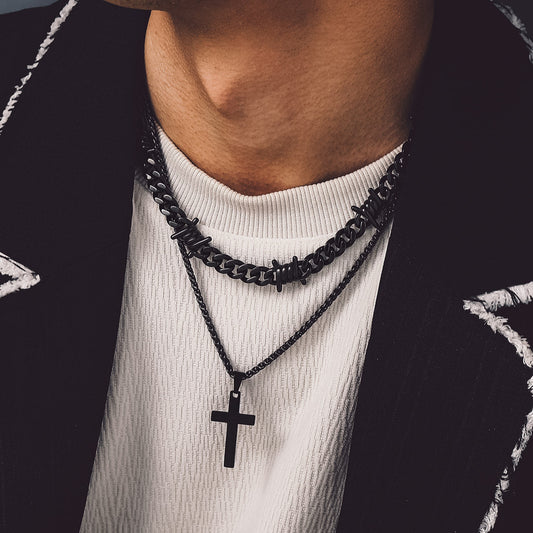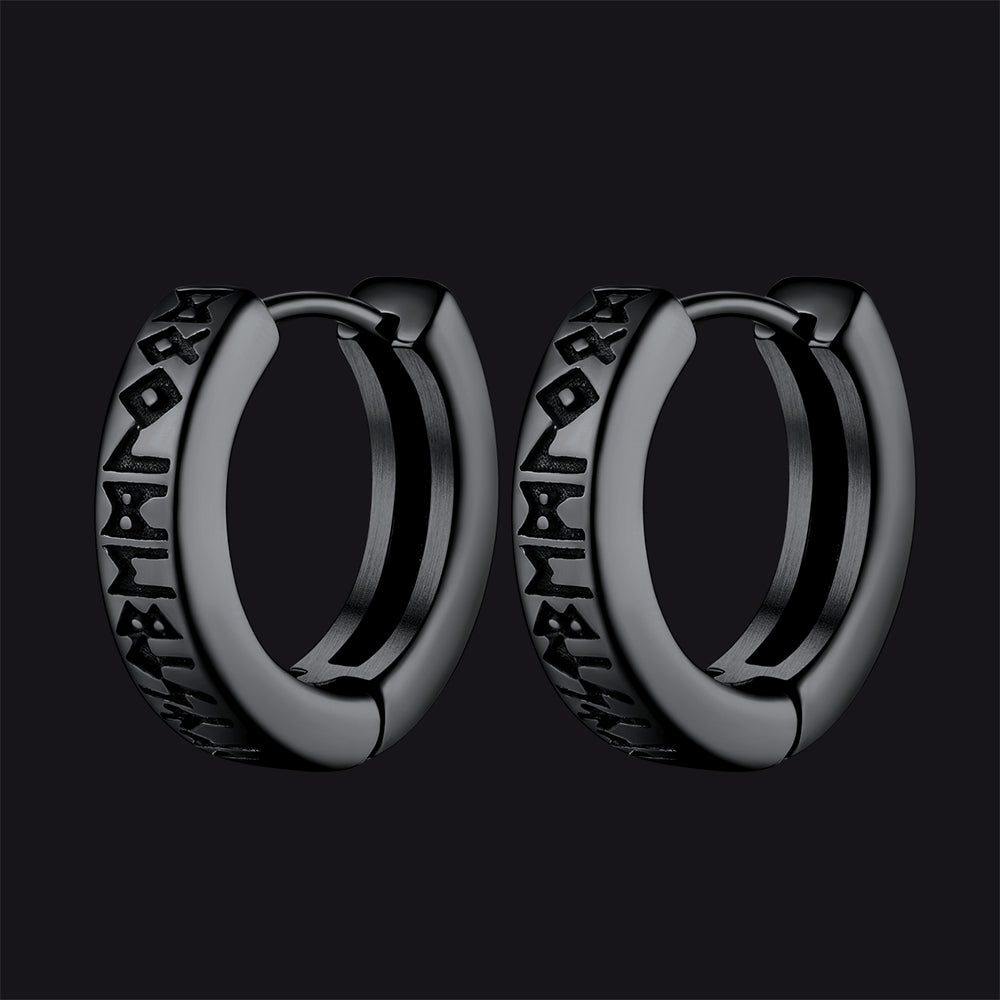Why Do Stainless Steel Cross Necklaces Last Longer Than Other Metals?
Your cross necklace is a powerful symbol, meant for daily wear. But silver tarnishes and gold-plating often fades, leaving you with a dull finish or irritated skin. There's a better way to honor your faith and memories. Stainless steel provides a brilliant, lasting shine that won't quit . It's hypoallergenic , incredibly durable , and stays beautiful without constant polishing. It's the smart choice for a necklace that truly endures, just like the beliefs it represents.

What Makes Stainless Steel So Durable?
To see why a stainless steel cross is built to last, you have to look at what it's made of. Unlike pure metals like gold or silver, stainless steel is a smart mix of elements. It's mostly iron, but its secret weapon is chromium . This combination creates a material far superior to traditional jewelry metals for everyday wear.
A Chromium Shield Against Tarnish
The magic is in the chromium . When exposed to air, it forms a tough, invisible, and self-healing shield over the metal's surface. If you scratch your necklace, this shield instantly repairs itself. This is why stainless steel resists the rust and tarnish that ruins other jewelry. While silver turns black and cheap metals turn your skin green, your stainless steel cross stays bright and clean.
Built Resilient for Real Life
Stainless steel is also incredibly strong. You can wear your necklace daily without worrying about it bending, denting, or getting easily scratched. This toughness protects the fine details of your cross pendant and keeps the chain links secure. Your necklace will hold its shape and shine through all of life's bumps.
Gentle on Your Skin
Ever get a rash or a green mark from certain jewelry metals? This is often due to nickel or copper in the alloy reacting with skin oils and sweat. Stainless steel, especially the higher grades like 316L (often called "surgical stainless steel") , has very low nickel content or holds nickel in a way that prevents it from leaching out, a key factor in preventing green skin . You can wear it with comfort and confidence.
Lasting Beauty, Minimal Maintenance Effort
Finally, stainless steel asks very little of you in terms of maintenance. Because it resists tarnish and corrosion, it doesn't need frequent polishing with special cloths or solutions. A simple wipe-down is usually all it takes to keep your cross chains for men looking great.

Side-by-Side Showdown: Stainless Steel vs. Common Jewelry Metals
Placing stainless steel next to other popular jewelry materials makes its advantages obvious. For a necklace you plan to wear every day, the choice becomes very clear.

Sterling Silver
Sterling silver has a classic, bright shine but comes with a major downside: it tarnishes . The copper mixed into the silver reacts with air and moisture, turning the necklace black or brown. This means you are stuck polishing it all the time to keep it looking good. Silver is also a soft metal, so it scratches and bends easily, which can ruin the details of a cross or weaken a chain.
Solid Gold
Solid gold is beautiful and doesn't tarnish, but it has its own issues. Pure 24k gold is far too soft for jewelry, so it must be mixed with other metals for strength. Even these gold alloys are much softer than stainless steel and can be easily scratched or dented with daily use . The biggest hurdle is the price. A solid gold necklace is a huge expense, making it impractical for many people who just want a durable, everyday piece.
Gold-Plated Jewelry
Gold-plated pieces offer the look of gold for less money, but this look is temporary. A paper-thin layer of gold is coated over a cheap base metal, like brass or copper. Through normal friction and contact with your skin, that thin gold layer inevitably wears off . Soon, the dull base metal underneath shows through, leaving your necklace looking discolored and cheap. It's a short-term solution that always ends in disappointment.
Copper, Brass, and Base Metals
Metals like copper and brass tarnish very quickly. They are highly reactive and are the usual culprits for leaving green stains on your skin. At the lowest end are cheap zinc alloys often used in fashion jewelry. These pieces are incredibly fragile, break easily, and corrode almost immediately. They are also a frequent source of skin irritation and rashes .
Barbed Wire Chain & Cross Layered Necklaces
How to Extend the Life of Your Stainless Steel Necklace
Your stainless steel necklace is built tough, but a little care will keep it looking brand new for years. It starts with choosing a quality piece and follows with a few simple habits.
- Start with the quality necklace choices made from high-quality 316L stainless steel, often called surgical grade. This type gives you the best protection against corrosion and is great for sensitive skin. Also, check for strong clasps and smooth, well-made chain links. A well-built necklace is the foundation for a long life.
- Avoid Harsh Chemicals. Take off your necklace before swimming in chlorinated pools or using strong cleaning products like bleach. It's also wise to apply lotions or perfumes and let them dry before putting on your jewelry. These substances can slowly dull the metal's finish.
- Protect from Scratches and Impacts. While durable, steel can be scratched by very rough surfaces or dented by a hard blow. It's a good idea to remove your necklace during sports, yard work, or other intense physical activities to keep it safe.
- Rinse After Ocean Swims. Saltwater can be hard on any metal over time. Give your necklace a quick rinse with fresh water after a beach day to wash away the salt. Be sure to dry it completely afterward.
- Clean it Gently. For routine cleaning, a soft, damp cloth works perfectly. For a deeper clean, use warm water with a drop of mild dish soap. Gently wash, rinse well with plain water, and dry it completely with a lint-free cloth to avoid water spots.
- Store it Properly. To prevent scratches from other jewelry, keep your necklace in a soft pouch or a separate compartment in your jewelry box when you're not wearing it.
Invest in Stainless Steel Cross Necklaces for Enduring Style
When you buy a stainless steel cross necklace, you're not just getting a piece of jewelry; you're investing in something that will last and look good for a long time. With its natural resistance to rust, tarnishing, and wear, along with the fact that it is safe and easy to care for, it is the best material for a cross chain piece that you want to wear every day.

FAQs About Stainless Steel Jewelry
Q1: Is stainless steel truly hypoallergenic for everyone?
While 316L surgical stainless steel is widely considered hypoallergenic and is an excellent choice for sensitive skin, no material can guarantee absolutely zero reaction for every single person . However, it's significantly less likely to cause irritation compared to metals like nickel or copper.
Q2: Can stainless steel actually rust?
Stainless steel is highly resistant to rust, but it's not entirely rust-proof under all conditions . Extreme and prolonged exposure to very harsh chemicals, highly saline environments (like continuous immersion in saltwater without rinsing), or certain industrial acids could potentially cause some surface discoloration or "pitting corrosion" on lower grades of stainless steel. For everyday wear of a stainless steel cross necklace , rust is highly unlikely.
Q3: What's the best way to clean my stainless steel cross necklace?
The best way to clean your stainless steel cross necklace is with warm water and a few drops of mild liquid dish soap . Gently rub the necklace with your fingers or a soft cloth, rinse it well under clean water, and then dry it thoroughly with a soft, lint-free cloth. Avoid abrasive cleaners or harsh chemicals, as these can scratch the surface or compromise the finish.
Q4: Will my stainless steel necklace change color over time?
No , a quality stainless steel cross necklace will not change color over time. It maintains its original silver-tone luster because it does not tarnish or oxidize like silver or copper. This is one of its main advantages for long-term wear.
Q5: Is surgical stainless steel actually better than regular stainless steel for jewelry?
Yes , for jewelry, surgical grade stainless steel (specifically 316L) is generally superior. It has a higher resistance to corrosion and is designed to have a very low rate of nickel release, making it the preferred choice for body piercings and jewelry worn close to the skin, like a stainless steel cross necklace for men or women, where hypoallergenic properties are important.





